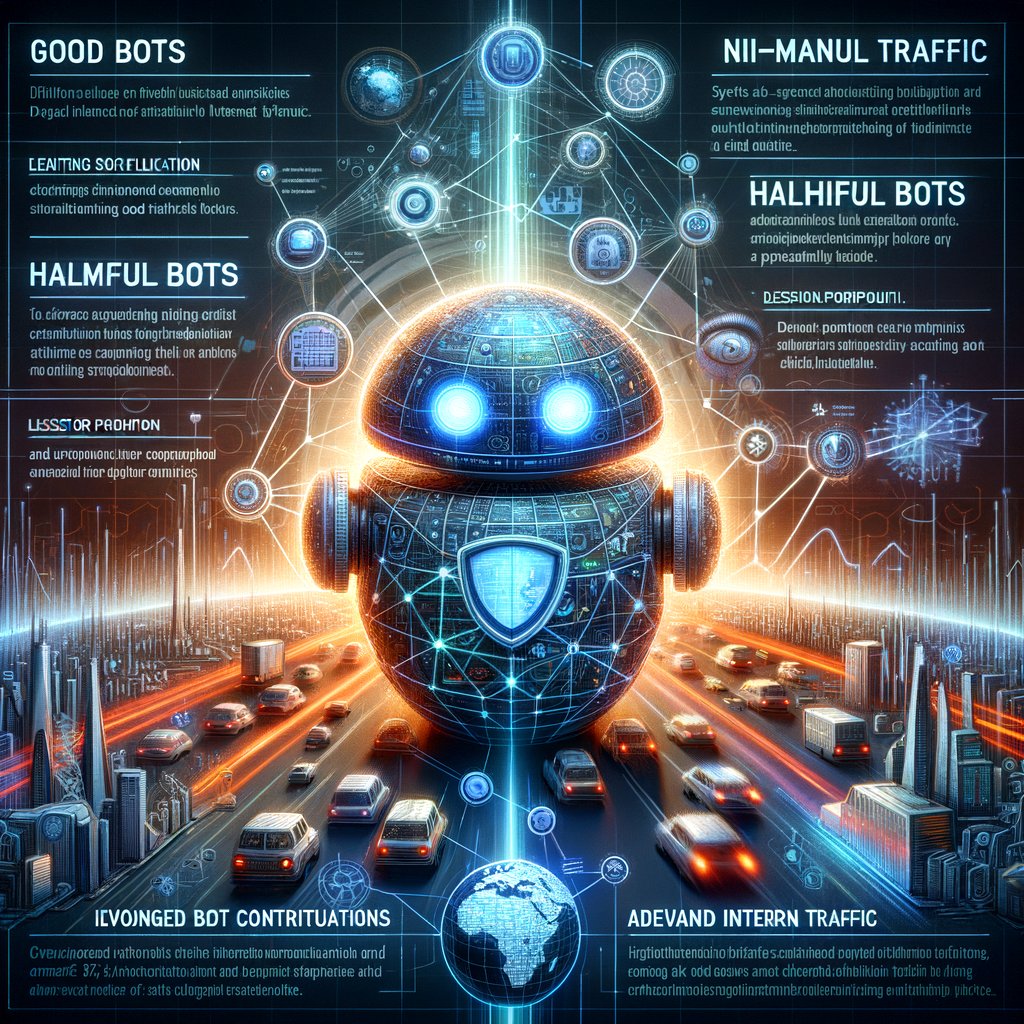Image created by AI
Rise of the Bots: Assessing the Impact of Automated Internet Traffic in 2023
In an age where digital interactivity is at the apex of civilization, the impact of bots on internet traffic has surfaced with startling figures. According to the 2024 Bad Bot Report by Imperva, an astonishing 49.6% of total internet traffic in 2023 was non-human, primarily driven by bots. This not only represents a 2% increase from the previous year but also marks the highest level recorded since monitoring began a decade ago.
The complexity of this issue deepens with the troubling contribution of bad bots, which accounted for a third of all internet traffic last year. These bots — engineered to engage in harmful activities such as transaction fraud, data harvesting, and unauthorized web scraping — pose significant threats to data security and the integrity of online services. While it might be easy to dismiss these figures as mere statistics, they resonate profoundly given the World Bank's report, which noted that approximately 5.3 billion people, or two-thirds of the global population, are active internet users.
As the line blurs between human and non-human traffic, concerns about the Dead Internet Theory, which suggests bots dominate online activities, gain more credibility. While some aspects of this theory edge into the realm of conspiracy, the undeniable presence of increasing and evolving bot traffic is influencing user experiences and content interactions across the web.
Interestingly, while the proportion of bad bots has seen a relative decrease according to Barracuda’s 2024 analysis, the sophistication of these bots is surging. Advanced bots, which convincingly mimic human interactions, have grown from representing 36% to 44% of bot traffic, underscoring a trend toward quality over quantity. This evolution likely stems from enhanced security measures pushing malicious actors toward more nuanced, stealthier techniques.
In South Africa, the scenario appears somewhat more optimistic. Cloudflare Radar pointed out that human traffic still dominates at 82%, higher than the global average. However, even within this context, the emerging sophistication of bots remains a notable trend. Advanced bots, though fewer in number, now play a disproportionate role in the bot traffic landscape, indicating a pivot toward strategic, high-impact deployments.
Amidst these challenges, it's crucial to acknowledge the role of good bots, which comprised 42% of total bot traffic. These beneficial bots perform essential functions such as indexing web pages for search engines and managing social media operations, highlighting the dual-edged nature of bot technology. The advancement in AI not only fuels the capabilities of harmful bots but also enhances the functionalities of these benevolent counterparts, helping to safeguard and streamline online processes.
As we advance into more digitally integrated times, the distinction between helpful and harmful bots will become ever more critical. The prevailing increase in bot-driven internet traffic underscores an urgent need for advanced cybersecurity strategies and robust digital literacy to navigate and protect our increasingly automated world.










